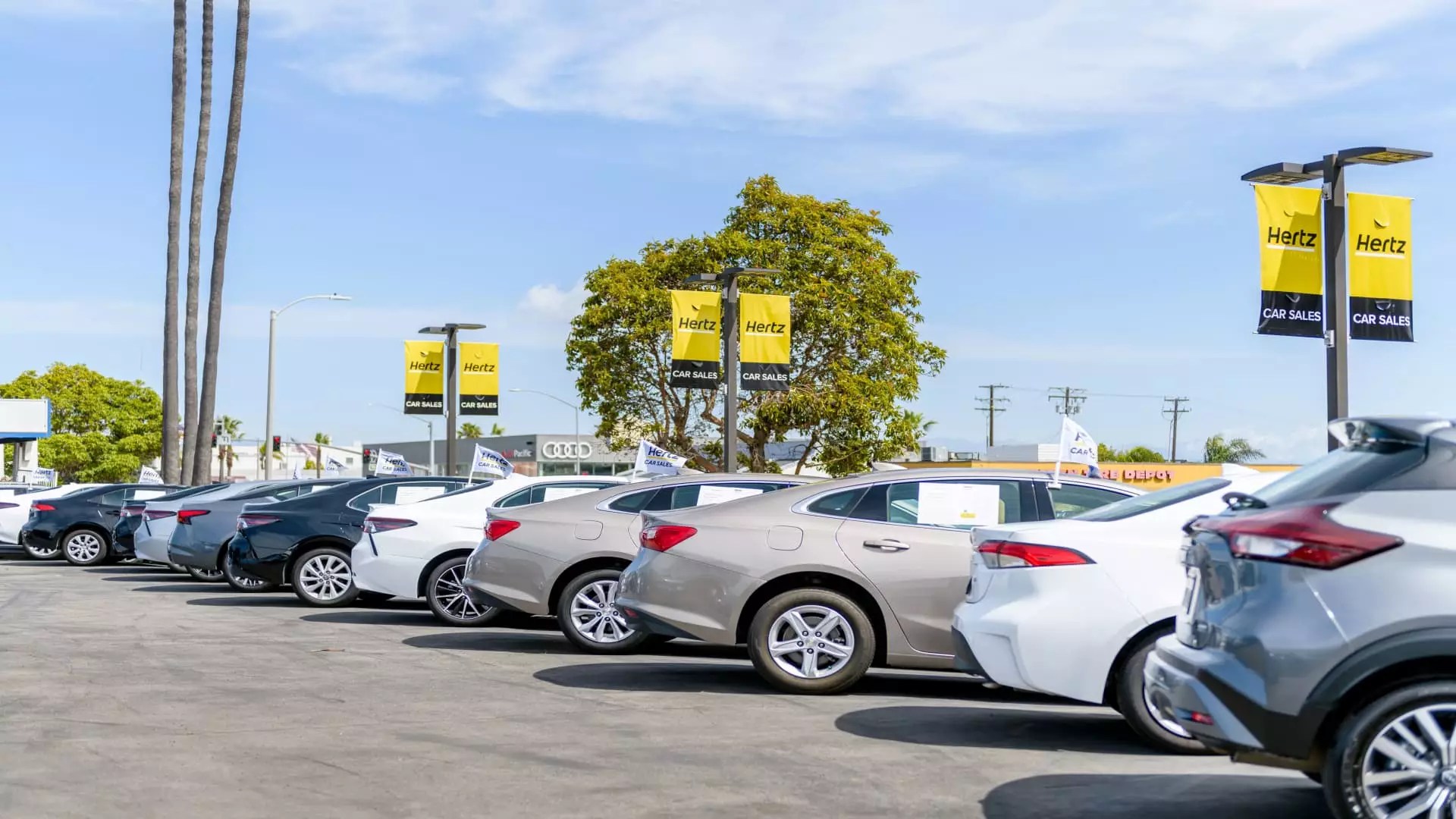Hertz’s latest move to sell preowned vehicles on Amazon Autos signals a daring attempt to reshape its business model amidst turbulent times. Traditionally known for its car rental empire, Hertz is now venturing into the fiercely competitive online used car marketplace—a bold strategy driven by necessity and ambition. This maneuver reveals a company eager to adapt and stay relevant in a digital age where convenience and accessibility are king. However, whether this expansion will truly translate into sustainable growth remains questionable, especially given Hertz’s historical struggles and market skepticism.
The partnership’s core promise lies in offering customers an integrated, seamless online shopping experience. Customers in four initial cities—Dallas, Houston, Los Angeles, and Seattle—can now browse Hertz’s used vehicle inventory, sign paperwork electronically, and finalize purchases without stepping into a dealership. Such convenience aligns with current consumer trends, but it also raises complex questions: Can an auto retail experience be genuinely effective without in-person engagement? Will customers trust an industry fraught with concerns about vehicle quality, pricing transparency, and post-sale service whenbuying from a rental company on a digital platform?
Despite the apparent innovation, Hertz’s move exposes the company’s ongoing divergence from its core business. Instead of solely relying on its rental fleet, Hertz aims to capitalize on the growing digital used-car market, which Amazon’s broader platform could indeed amplify. However, the challenge is convincing customers that a rental giant is a credible source for purchasing high-quality preowned cars—particularly one trying to rebuild its reputation after filing for bankruptcy during the pandemic. This initiative, while promising increased visibility, comes with inherent risks: can Hertz leverage Amazon’s dominant e-commerce ecosystem without diluting its brand or disappointing customers?
Strategic Imperatives and Industry Implications
This partnership between Hertz and Amazon Autos exemplifies a larger shift within the automotive retail industry—digital transformation driven by necessity. Market dynamics now favor companies that can seamlessly blend online and offline experiences, especially in the used car segment, which has long suffered from opaque pricing and inconsistent quality standards. Hertz’s ambition to become a more prominent auto retailer within Amazon’s ecosystem suggests an acknowledgment that the future of car buying is rooted in digital convenience.
Furthermore, Hertz’s existing initiatives—like the Rent2Buy program—highlight its understanding that consumer preferences are changing. Offering customers the chance to rent a used vehicle before purchasing aims to bridge the gap between rental and ownership, creating a less risky and more enticing proposition. Yet, integrating these programs into the Amazon platform may introduce operational complexities and raise questions about the quality assurance that customers expect from a trusted retailer.
This strategic foray also underscores a broader shift in market power. Amazon’s entry into auto sales—initially limited to new cars before expanding to used vehicles—positions the tech giant as a formidable player alongside traditional dealerships. Hertz’s participation is an acknowledgment of Amazon’s influence and an attempt to tap into that digital dominance. But the true test will be whether such partnerships can produce profits at scale without compromising customer trust or operational efficiency.
Long-Term Viability and Critical Concerns
Despite its optimistic outlook, Hertz’s venture into online used car sales faces substantial hurdles. The automotive industry’s complexity, including vehicle inspections, financing, warranties, and after-sales service, cannot be fully addressed through a digital storefront alone. Customers will likely demand the same transparency and reliability they associate with established dealerships—something that Hertz, despite its renewed focus, may struggle to deliver consistently in this new arena.
Moreover, this move underscores Hertz’s ongoing struggle to redefine its identity post-bankruptcy. While the company claims its digital expansion is part of a “Back-to-Basics” plan focusing on fleet management and revenue optimization, critics may view it as a desperate attempt to reinvent itself through partnership rather than innovation from within. Is Hertz positioning itself as a true leader in the automotive retail space, or is it merely piggybacking on Amazon’s success?
Ultimately, this pivot raises questions about the sustainability of relying on digital marketplaces for high-stakes transactions like car sales. Will consumers trust Hertz to provide the same quality assurance they associate with traditional dealerships, or will doubts linger about post-sale service and vehicle condition? As Hertz attempts to carve a new path, it must confront the brutal reality of the auto industry’s complexity and consumer expectations—a daunting challenge that not all digital partnerships can overcome.

